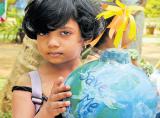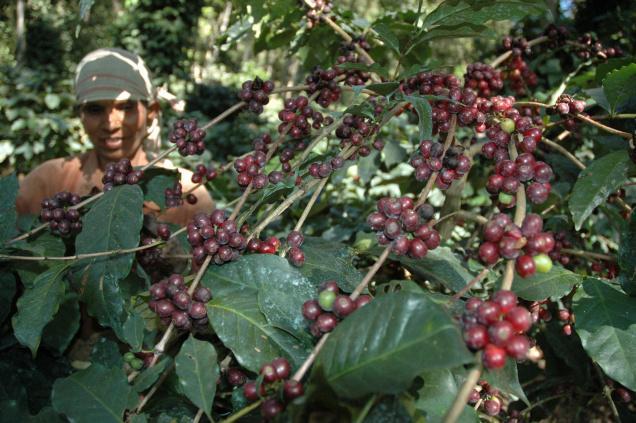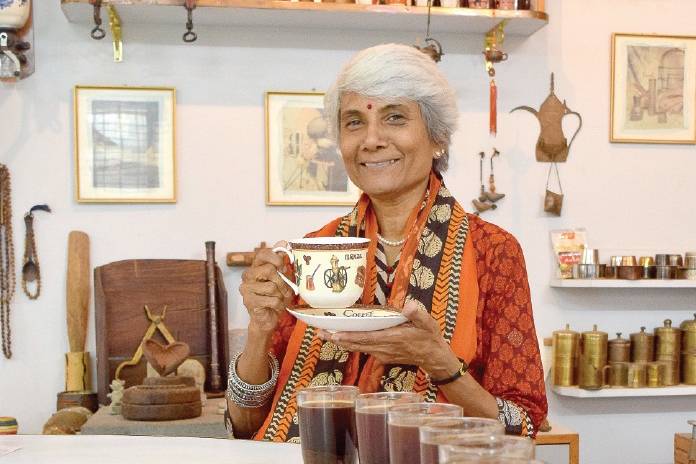There’s a scene in the movie The Bucket List where Jack Nicholson’s billionaire character realises kopi luwak – the “fancy” coffee he insists on drinking – is made from the faeces of a cat-like creature.
“You’re shitting me?” he says. “Cats beat me to it,” his terminally ill mate replies. Both men laugh until tears stream down their faces and then his friend ticks: “laugh until I cry” off his bucket list.
Scatological jokes aside, there is a well-documented dark side to kopi luwak, which is also known as civet coffee.
In February, civet coffee plantation tours were ranked among the world’s top 10 cruel animal attractions by World Animal Protection.
“There is now a growing civet coffee plantation tourism industry in Indonesia where tourists visit caged civet cats and sample the coffee,” says a report by the University of Oxford’s Wildlife Conservation Research. “This is causing more and more civets to be caged and abused.”
Kopi luwak is made from coffee cherries that have passed through the intestines of a common palm civet (known as a luwak in Indonesia); a small, nocturnal carnivore. The enzymes break down the beans, which when roasted, create a smooth, less bitter brew, according to some coffee connoisseurs.
(Not everyone is a fan. The Washington Post’s food critic Tim Carman wrote of his experience: “Stale. Lifeless. Petrified dinosaur droppings steeped in bathtub water. I couldn’t finish it.)
World Animal Protection says that when civet droppings are collected from the wild, no cruelty is involved. Indeed the history of kopi luwak is purported to date back to the Dutch colonial era, when native coffee plantation workers were forbidden to pick coffee for their own use. They discovered undigested beans in civet droppings and created their own aromatic brew.
However in recent decades the coffee – with its irresistibly weird back story – has become a global sensation, with wild-sourced beans fetching prices of up to £2000 ($3700) a kilo.
The massive international demand and exorbitant prices led to civets being caged to increase productivity and create commercially viable quantities of civet poo.
“Caged civets are encouraged to gorge on an unbalanced diet of coffee cherries,” the World Animal Protection report says. The process has been compared to fattening geese to create foie gras but with a lot more caffeine. “Many show signs of great stress, including pacing and self-mutilation. This unnatural captivity and forced feeding results in injuries, disease and poor nutrition.”
But despite their famous faeces, little is known about the common palm civet itself, according to PhD student Peter Roberts, a lecturer in animal care in Britain. “How can we look after the species in captivity without knowing how they will behave in the wild?”
Roberts aims to collect data on the habitat use, behaviour and estimated population of civets around the village of Cipaganti in Java for the PhD he is doing at Oxford Brookes University. He hopes his research will add vital information to what is known about the ecology of the species and contribute to better animal husbandry and management policies.
However, because funding invariably goes to rare species – the civet is listed by the International Union for Conservation of Nature as a species of “least concern” – his PhD is largely self-funded. It’s been a painstaking process. A recent attempt to crowd-source 10 camera traps raised a paltry £15 in 56 days.
Meanwhile, the trade in civets is increasing dramatically in Indonesia. Civets have become a popular exotic pet in Indonesia and there has been a rise in the popularity of kopi luwak and civet coffee farms in Java and Bali.
The problem, Roberts says, is that no-one has been able to quantify what damage this trade is doing to wild populations. “More wild research is desperately needed.”
Although common palm civets are not protected in Indonesia, trade is regulated through an annual quota system. In 2016, a total of 250 common palm civets can be captured for domestic use and 225 for export from just four provinces in Indonesia.
Eko Arifyanto from the Biodiversity Conservation Agency says this is to keep the balance of the number of animals in the wild. There has not been a request for one permit this year.
However the sheer numbers of civets for sale in Javan and Balinese animal markets alone suggest this quota system is simply not being enforced. “It is difficult to know because we have very limited human resources while our coverage area is quite big,” Eko says.
When Fairfax Media visited Pasar Satria, a market in Denpasar, young civets were available for 450,000 Rupiah (about $45) each.
Author and former coffee trader Tony Wild believes he spawned a monster. Wild claims to be the first person to bring a kilogram of kopi luwak to the west in 1991, while working as a coffee director for Taylors of Harrogate. The product, with its “certain repulsive charm”, became a media sensation beyond his wildest dreams.
However two decades later, while researching his book Coffee: A Dark History, Wild learnt civets were being poached and caged all over south-east Asia and force-fed coffee cherries.
In 2013 he started the Facebook campaign Kopi Luwak: Cut the Crap. He also played a key role in a BBC investigation of animal cruelty on civet farms in Sumatra.
“I don’t think a large number of consumers have been put off by the life of the animal – kopi luwak is pretty much everywhere in Indonesia, and I think you will find probably the same in south-east Asia,” he says.
Wild does believe there is a sustainable business model in genuine wild kopi luwak.
In Gayo, for example, a famous coffee producing region at the tip of Sumatra, Anasryta has been gathering civet faeces foraged by collectors for more than 20 years. Gabah (the cleaned coffee beans) are worth 80,000 rupiah ($8) a kilogram. “You can tell the difference, which kopi luwak is from the wild and from the farm,” Anasryta says.
“The wild has a richer taste, luwak in the wild eats all kinds of stuff, skins of trees, fruits.”
However many kopi luwak producers are now savvy to the controversy around caged civets. “You will find most kopi luwak is now marketed as “genuine wild” kopi luwak,” Wild says. “There’s really only one way of telling and that is having a personal relationship with the producers and going to the plantation and even then it’s difficult to prove.”
Coffee certifiers Rainforest Alliance and UTZ Certified – the world’s leading label for sustainable coffee production – no longer certify coffee producers that use caged civets or other animals.
And in June 2015, Indonesia introduced standards for luwak coffee production, that emphasised the civets were not to be starved, harmed, scared or depressed.
“We welcome the Indonesian government recognising there is an issue, however if they truly wish to stop the suffering then all caged production of kopi luwak must be prohibited,” says World Animal Protection’s Joanna Toole. “There is no justification to take these animals from the wild and keep them in confinement for years on end to produce a luxury coffee for tourists.”
Bali Geo is a kopi luwak cafe in Ubud that opened several weeks ago.
The cafe has three civets on site, but the owners say they are for display only, and will eventually be released. “We buy our supplies from a luwak farm up in Kintamani,” says co-owner I. Nyoman Lanus.
“I understand they have about 70 luwak in cages. I know they keep them in good condition. One luwak per cage, so they won’t fight each other. They would only be fed coffee beans around three times a week. Luwak will die if they are only fed with coffee.”
Nyoman says the coffee cherries are placed in a bowl and the civet is allowed to pick the best. The rest are sold back to the coffee farmers.
“For anybody to claim they have a steady flow of wild luwak coffee is impossible,” Nyoman says. “A mixture of wild and luwak farm, that’s more likely. Like what we sell here.”
The story Famous faeces: the story behind the civet-poo coffee craze first appeared on The Sydney Morning Herald.
source: http://www.esperanceexpress.com / The Esperance Express / Home> News> Latest News / April 15th, 2016






